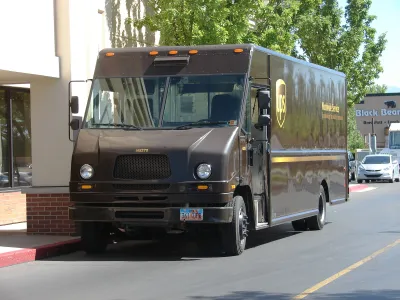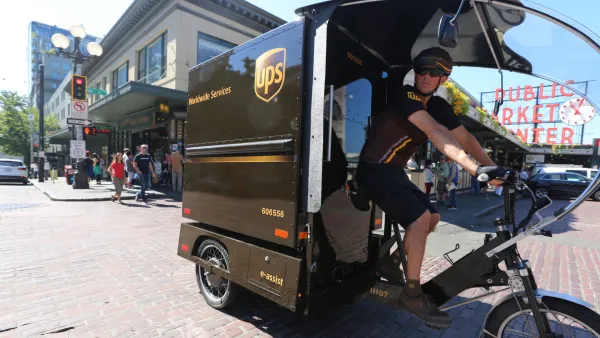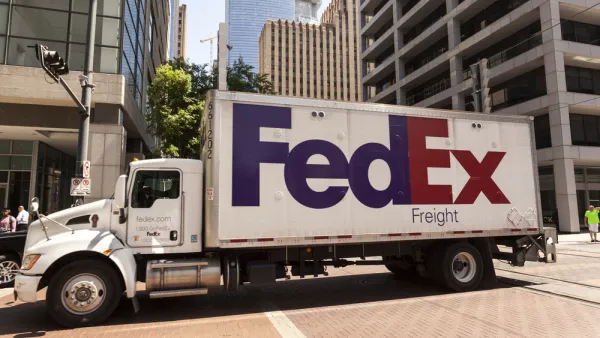How cities can minimize the impact of delivery vehicles on air quality and congestion through effective curb management and zero-emission delivery zones.

As urban delivery services become more common for a wider variety of goods and services, cities are looking at ways to cut down on the emissions and congestion caused by delivery vehicles. Writing in The City Fix, Hamilton Steimer and Vishant Kothari outline the results of a paper from the World Resources Institute (WRI) that assesses efforts to create ‘zero-emission delivery’ zones in the United States and the Netherlands.
As the article explains, “Zero-emission delivery zones are areas in which only zero-emission vehicles have unrestricted access, with fossil fuel vehicles either prohibited from entry or required to pay a fee for access.” The zones can take a variety of forms, from voluntary zones to localized pick-up locations and curbside spaces reserved for ZEVs.
The authors provide detail on the city of Los Angeles’ zero-emission commercial loading zones, which regulate curbside management in five dense areas with high demand for commercial loading and high levels of air pollution. “If expanded, zero-emission loading zones could discourage fossil fuel vehicle use in specific areas, incentivize a shift to zero-emission delivery throughout Los Angeles, and reduce residents’ exposure to air pollutants like particulate matter and nitrous oxides.”
The paper also provides five recommendations for developing and implementing zero-emission delivery zones successfully. As the authors caution, “Without proper design and implementation, zero-emission delivery zones and supportive policies could exacerbate existing inequities, such as diverting polluting freight traffic through neighborhoods outside the zone or failing to supply small businesses in the zone with the necessary financial support to purchase ZEVs.”
FULL STORY: Zero-Emission Delivery Zones: A New Way to Cut Traffic, Air Pollution and Greenhouse Gases

Analysis: Cybertruck Fatality Rate Far Exceeds That of Ford Pinto
The Tesla Cybertruck was recalled seven times last year.

National Parks Layoffs Will Cause Communities to Lose Billions
Thousands of essential park workers were laid off this week, just before the busy spring break season.

Retro-silient?: America’s First “Eco-burb,” The Woodlands Turns 50
A master-planned community north of Houston offers lessons on green infrastructure and resilient design, but falls short of its founder’s lofty affordability and walkability goals.

Test News Post 1
This is a summary

Analysis: Cybertruck Fatality Rate Far Exceeds That of Ford Pinto
The Tesla Cybertruck was recalled seven times last year.

Test News Headline 46
Test for the image on the front page.
Urban Design for Planners 1: Software Tools
This six-course series explores essential urban design concepts using open source software and equips planners with the tools they need to participate fully in the urban design process.
Planning for Universal Design
Learn the tools for implementing Universal Design in planning regulations.
EMC Planning Group, Inc.
Planetizen
Planetizen
Mpact (formerly Rail~Volution)
Great Falls Development Authority, Inc.
HUDs Office of Policy Development and Research
NYU Wagner Graduate School of Public Service



























